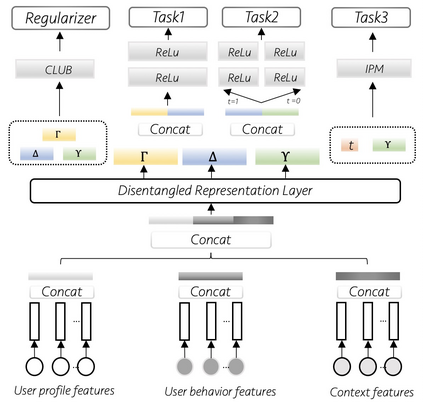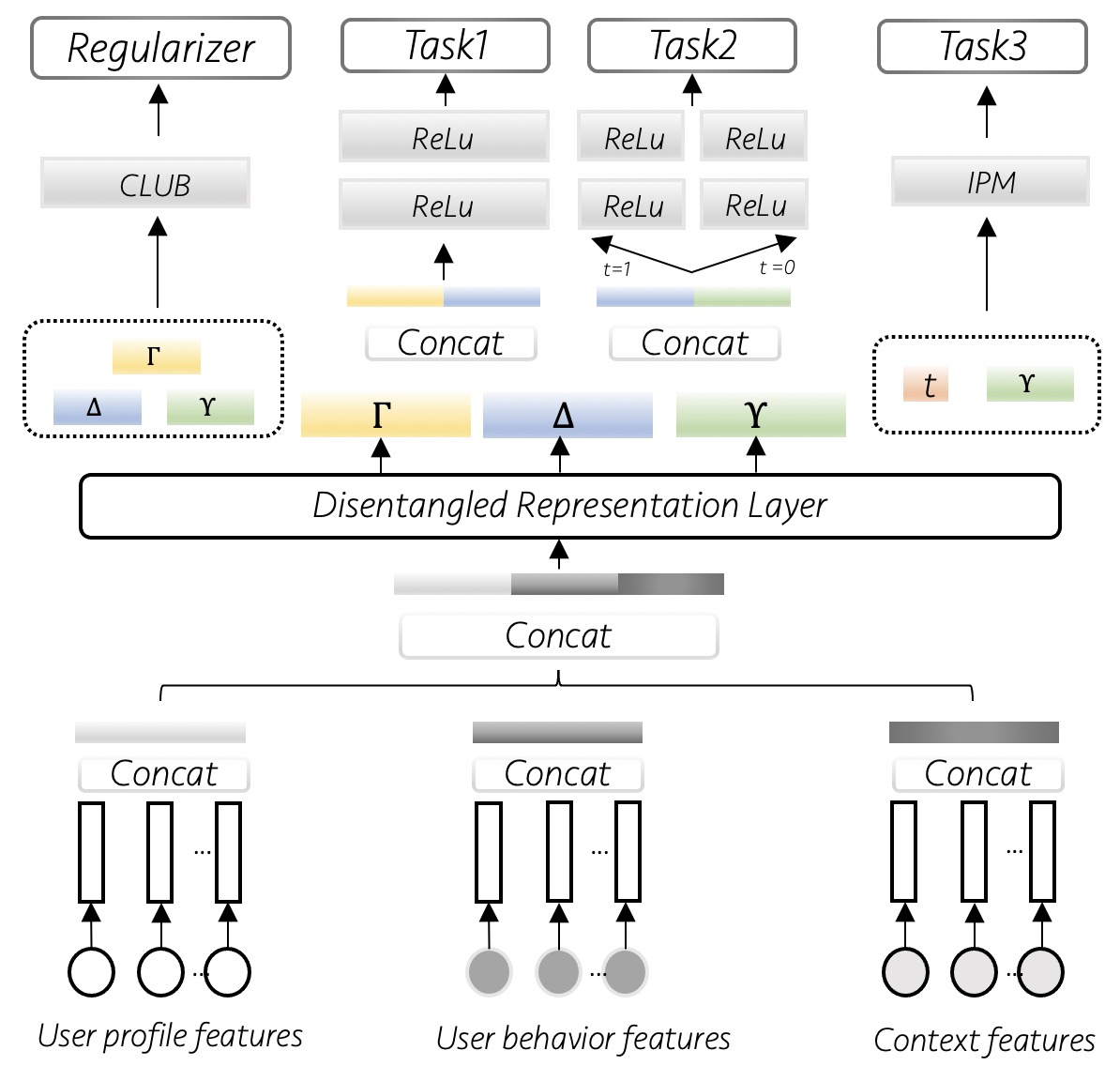Learning individual-level treatment effect is a fundamental problem in causal inference and has received increasing attention in many areas, especially in the user growth area which concerns many internet companies. Recently, disentangled representation learning methods that decompose covariates into three latent factors, including instrumental, confounding and adjustment factors, have witnessed great success in treatment effect estimation. However, it remains an open problem how to learn the underlying disentangled factors precisely. Specifically, previous methods fail to obtain independent disentangled factors, which is a necessary condition for identifying treatment effect. In this paper, we propose Disentangled Representations for Counterfactual Regression via Mutual Information Minimization (MIM-DRCFR), which uses a multi-task learning framework to share information when learning the latent factors and incorporates MI minimization learning criteria to ensure the independence of these factors. Extensive experiments including public benchmarks and real-world industrial user growth datasets demonstrate that our method performs much better than state-of-the-art methods.
翻译:学习个人层次的治疗效应是因果推断的一个根本问题,在许多领域,特别是在涉及许多互联网公司的用户增长领域,受到越来越多的关注。最近,分解的代议制学习方法在治疗效应估计方面取得了巨大成功,其中包括工具、混乱和调整因素,但这一方法在治疗效应评估方面却取得了巨大成功。然而,它仍然是一个如何确切了解根本分解因素的公开问题。具体地说,以往的方法未能获得独立的分解因素,而这是确定治疗效果的必要条件。在本文件中,我们建议通过相互信息最小化(MIM-DRCFR)来分解反事实回归的代议法(MIM-DRCFR),它利用多任务学习框架在学习潜在因素时分享信息,并纳入MI最小化学习标准以确保这些因素的独立性。包括公共基准和实际世界工业用户增长数据集在内的广泛实验表明,我们的方法比最新方法要好得多。






